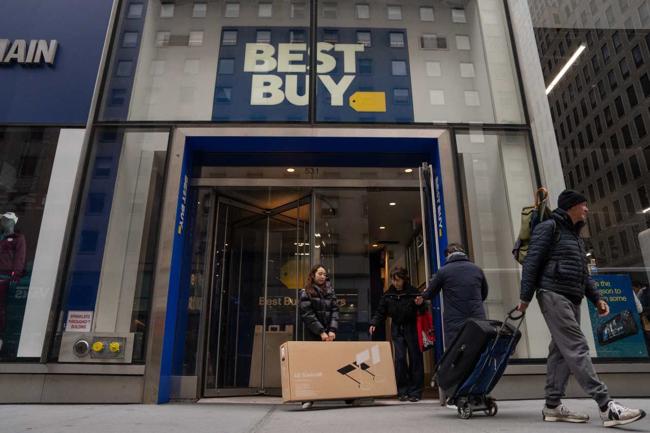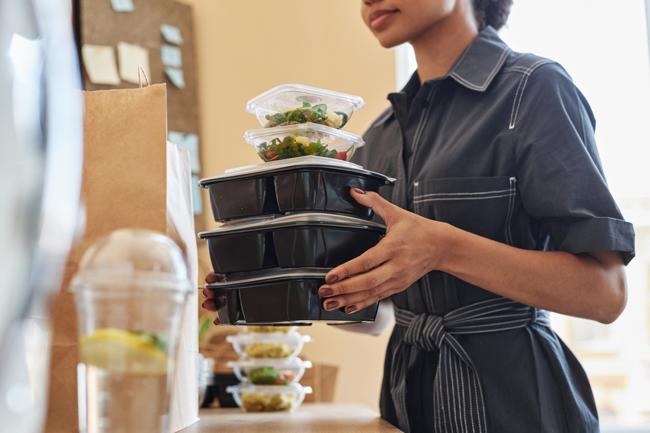Summary
For $17, and the promise of fresh, crunchy snacks in your future even weeks after opening the original packaging, the gadget seems like a complete no-brainer to have throughout the upcoming economic uncertainty.
Source: HuffPost

AI News Q&A (Free Content)
Q1: What are the key technological innovations in supermarkets aimed at extending the shelf life of groceries, and how do these impact consumer experiences?
A1: Recent innovations in supermarkets include smart packaging, temperature-controlled storage, and AI-driven inventory systems. These technologies help maintain optimal storage conditions, reduce spoilage, and ensure fresher products for consumers. Smart packaging can indicate freshness or spoilage, while temperature and humidity controls in storage and transport prolong product shelf life. AI-driven systems also forecast demand, reducing overstock and food waste, directly benefiting customers through fresher choices and more reliable stock availability.
Q2: How has retail technology adoption accelerated due to economic uncertainty and inflation, and what effect does this have on grocery shopping behaviors?
A2: Economic uncertainty and rising inflation have prompted supermarkets to adopt technologies like self-checkout systems, dynamic pricing, and digital coupons. These tools enhance operational efficiency and help manage costs. For consumers, these innovations offer convenience and potential savings, but also encourage strategic purchasing—such as buying in bulk or focusing on discounted items—thereby changing traditional shopping habits and increasing price sensitivity.
Q3: What does recent scholarly research reveal about business model innovation in the food supply chain, particularly concerning consumer and retailer benefits?
A3: A 2020 study highlights that innovations in value proposition, value creation, and value delivery—such as digitalization, e-commerce, and Internet of Things (IoT) solutions—have significantly reshaped the food supply chain. These changes have bridged gaps between supply and demand, enabled precise inventory management, and improved product quality. Both retailers and consumers benefit: retailers reduce losses due to spoilage, and consumers enjoy fresher products and more sustainable choices. (Source: 'Food Supply Chain and Business Model Innovation')
Q4: What are the emerging trends in smart home grocery tracking systems, and how might these systems further reduce food waste?
A4: Emerging trends include vision-based object detection systems that monitor grocery items in household storage, integrating data from retail shelving and real-time home inventories. These systems can predict usage patterns and automate replenishment, reducing over-purchasing and minimizing expired food. As these technologies mature, consumers are likely to benefit from less food waste and more efficient grocery management. (Source: 'Vision-Based Automatic Groceries Tracking System -- Smart Homes')
Q5: How has artificial intelligence transformed retail analytics in supermarkets since the COVID-19 pandemic?
A5: AI has revolutionized retail analytics by enabling better demand forecasting, optimizing supply chains, and personalizing promotions. The pandemic accelerated the adoption of AI for managing online grocery orders, coping with panic buying, and leveraging data to synchronize online and offline operations. Retailers adapted AI models to rapidly changing consumer behaviors, leading to improved inventory management and customer satisfaction. (Source: 'Retail Analytics in the New Normal: The Influence of Artificial Intelligence and the Covid-19 Pandemic')
Q6: What are the latest robotics advancements in grocery logistics, and how do they enhance product safety and consumer convenience?
A6: Recent robotics advancements, such as the introduction of LLM-Pack, use language and vision models to identify grocery items and generate optimal packing sequences. This approach mimics human packing strategies, reducing product damage and spoilage. For consumers, such automation results in better-preserved groceries and more efficient checkout experiences. These systems can adapt to new products without retraining, promising ongoing improvements in logistics. (Source: 'LLM-Pack: Intuitive Grocery Handling for Logistics Applications')
Q7: How did the concept of supermarkets evolve, and what economic principles make them effective in delivering fresh groceries at competitive prices?
A7: Supermarkets originated in the 1930s, evolving as a response to the need for efficiency and scale in food retail. They leverage bulk purchasing, streamlined logistics, and self-service models to keep prices low. By minimizing labor and financing costs and using loss leaders, supermarkets attract a high volume of shoppers, which offsets their low margins and enables them to offer fresh groceries at affordable prices.
References:
- Supermarket, https://en.wikipedia.org/wiki/Supermarket





